Table of Contents
- Introduction
- What Is Leaching? The Science Behind the Concern
- How Aluminum Interacts with Food
- Evidence from Scientific Studies: How Much Leaches and When?
- Are There Health Risks from Aluminum Leaching?
- Mitigation Strategies: Reducing Aluminum Leaching in Everyday Use
- Conclusion & Next Steps
- References
- Meta Information
- Pre-Publication Checklist
Introduction
Aluminum containers and foil have become staples in food packaging, cooking, and storage across the globe. Their popularity stems from their lightweight design, high thermal conductivity, corrosion resistance, and ability to keep food fresh. Yet, a persistent question lingers among consumers and food safety experts alike: Do aluminum containers leach chemicals into food? This article peels back the layers of science, examining the mechanisms, real-world evidence, health implications, and practical mitigation strategies. Through a balanced, evidence-based approach, we address consumer concerns and illuminate the facts about aluminum leaching into food. Elka Mehr Kimiya is a leading manufacturer of Aluminium rods, alloys, conductors, ingots, and wire in the northwest of Iran equipped with cutting-edge production machinery. Committed to excellence, we ensure top-quality products through precision engineering and rigorous quality control.
What Is Leaching? The Science Behind the Concern
Leaching is the process where substances migrate from containers or packaging into food or beverages. In the context of aluminum, leaching refers to the transfer of aluminum ions from containers, trays, or foil into the contents they touch¹. This process can be influenced by multiple factors, including food composition, acidity, temperature, and contact time. Regulatory agencies, including the European Food Safety Authority (EFSA) and the U.S. Food and Drug Administration (FDA), regularly review available data to ensure public safety¹². The primary concern is whether the amount of aluminum that leaches poses any risk to human health.
How Aluminum Interacts with Food
Aluminum’s Surface Chemistry and Protective Oxide Layer
Aluminum’s corrosion resistance in daily use is thanks to its naturally occurring oxide film—a thin, inert layer of aluminum oxide that forms instantly on exposure to air³. This layer acts as a barrier, preventing most reactions between the metal and food. However, certain conditions can compromise this protection, allowing increased leaching.
Figure 1: Aluminum Oxide Layer on Food Container
Alt text: Cross-section of aluminum showing a thin, stable oxide barrier.
Role of pH, Temperature, and Food Composition
The leaching rate depends heavily on food pH. Acidic foods (like tomato sauce, citrus, or vinegar-based dressings) can dissolve the oxide layer and increase aluminum migration⁴. Similarly, salty or spicy foods, as well as high-fat recipes, may enhance leaching due to their chemical reactivity⁴. Elevated temperatures—baking, roasting, or grilling—can also accelerate this process. Table 1 summarizes the conditions affecting aluminum leaching.
Table 1: Factors Influencing Aluminum Leaching (Data as of May 2025)¹⁴
| Factor | Effect on Leaching Rate |
|---|---|
| High acidity (low pH) | Strong increase |
| High salt content | Moderate increase |
| High temperature | Strong increase |
| Fatty/oily foods | Moderate increase |
| Neutral pH, low temp | Minimal leaching |
Evidence from Scientific Studies: How Much Leaches and When?
Laboratory Experiments and Simulated Cooking
Several peer-reviewed studies have measured aluminum migration under controlled conditions. A 2022 EFSA assessment found that, under normal household use, aluminum leaching remains below the tolerable weekly intake (TWI) for most individuals¹. Cooking acidic foods in uncoated aluminum trays at 180°C for 1 hour led to increases in aluminum content from less than 1 mg/kg to as much as 6 mg/kg food³⁴. For neutral-pH foods like rice or potatoes, migration was much lower (typically under 1 mg/kg)³.
Table 2: Aluminum Migration in Different Food Types (Simulated Cooking; Data as of May 2025)³⁴
| Food Type | pH | Temp (°C) | Aluminum Migrated (mg/kg) |
|---|---|---|---|
| Tomato Sauce | 4.2 | 180 | 5.2 – 6.0 |
| Lemon Fish | 3.8 | 180 | 4.8 – 5.6 |
| Potatoes | 6.0 | 180 | 0.7 – 1.1 |
| Rice | 6.2 | 100 | 0.3 – 0.8 |
Real-World Food Contact Scenarios
In everyday use, the total aluminum transferred to food is typically far lower than laboratory maxima. An international market survey found the average consumer intake from food contact with aluminum trays and foil ranged from 0.01 to 0.2 mg/kg body weight per week—well below the provisional tolerable weekly intake of 1 mg/kg body weight set by EFSA¹. However, frequent use of aluminum containers for acidic or salty foods can increase these values, especially when combined with high temperatures or prolonged storage.
Are There Health Risks from Aluminum Leaching?
Tolerable Intake and Safety Guidelines
Both the EFSA and the FDA have conducted comprehensive reviews of the health effects of dietary aluminum⁵. The EFSA’s tolerable weekly intake (TWI) of 1 mg/kg body weight per week is considered a safe upper limit for the general population¹. Most studies show average exposures from aluminum packaging are below this level, even with regular use. Acute toxicity is rare, as the human body absorbs only a small fraction of ingested aluminum, excreting the majority via the kidneys⁵.
Table 3: International Guidelines on Dietary Aluminum Intake (Data as of May 2025)¹⁵
| Agency | TWI (mg/kg body weight) |
|---|---|
| EFSA | 1.0 |
| JECFA (WHO/FAO) | 2.0 |
| FDA | No set TWI; uses case-by-case assessment |
Populations of Special Concern
Certain groups may be more vulnerable, including infants, people with kidney dysfunction, and those consuming very high amounts of processed foods wrapped or cooked in aluminum⁶. Chronic overexposure has been linked to neurological issues in sensitive populations, but typical consumer exposure from food packaging remains well below harmful levels⁷.
Mitigation Strategies: Reducing Aluminum Leaching in Everyday Use
Use of Coatings and Barriers
Modern aluminum trays and containers often employ food-safe coatings—lacquers, resins, or ceramic films—that act as barriers to migration⁸. These coatings remain stable during standard cooking and significantly reduce aluminum transfer to food⁸. Figure 2 shows a cross-section of a coated tray.
Figure 2: Schematic of Coated Aluminum Food Tray
Alt text: Layered diagram showing aluminum substrate, coating, and food contact.
Practical Consumer Tips
- Avoid cooking or storing acidic foods in uncoated aluminum.
- Use parchment paper or food-safe liners to create a physical barrier.
- Limit use of aluminum trays for high-temperature, long-duration baking of acidic dishes.
- Look for “coated” or “anodized” labeling for reduced migration risk.
- Recycle containers after use to prevent environmental accumulation.
Conclusion & Next Steps
Aluminum leaching into food is a scientifically recognized but manageable concern. While some migration does occur—especially with acidic or salty foods, high temperatures, and prolonged contact—most evidence suggests typical consumer exposure remains well within safe limits. Regulatory bodies have set guidelines to ensure food safety, and manufacturers have responded with coatings and improved materials. To minimize leaching risk, consumers should use coated containers for cooking acidic dishes and avoid prolonged storage of such foods in bare aluminum. As research continues and manufacturing standards advance, the safety of aluminum food containers will remain a priority in the global food packaging industry.
References
- European Food Safety Authority. (2022). Safety assessment of aluminum in food contact materials. https://www.efsa.europa.eu/en/efsajournal/pub/6419
- U.S. Food & Drug Administration. (2024). Metals in food: Aluminum. https://www.fda.gov/food/metals/aluminum
- Lamberti, M. et al. (2017). Migration of aluminum from food contact materials to food—A review. Food Additives & Contaminants, 34(1), 1-12. https://www.tandfonline.com/doi/full/10.1080/19440049.2016.1244327
- Saiyed, S. M., & Yokel, R. A. (2005). Aluminum content of some foods and food products in the USA. Food Additives & Contaminants, 22(3), 234–244. https://www.tandfonline.com/doi/abs/10.1080/02652030500073684
- EFSA Panel on Food Additives. (2008). Safety of aluminum from dietary intake. EFSA Journal, 754, 1–34. https://www.efsa.europa.eu/en/efsajournal/pub/754
- Agency for Toxic Substances and Disease Registry (ATSDR). (2019). Toxicological Profile for Aluminum. https://www.atsdr.cdc.gov/toxprofiles/tp22.pdf
- Krewski, D., et al. (2007). Human health risk assessment for aluminum, aluminum oxide, and aluminum hydroxide. J Toxicol Environ Health B Crit Rev, 10, 1–269. https://www.tandfonline.com/doi/full/10.1080/10937400600755717
- European Aluminium Association. (2023). Food Contact Materials—Technical Guidance. https://www.european-aluminium.eu


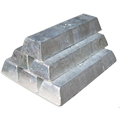
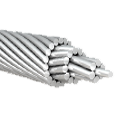

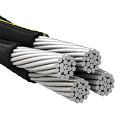
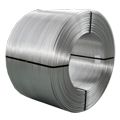
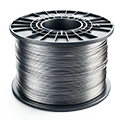
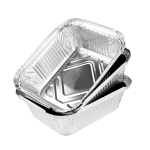








No comment